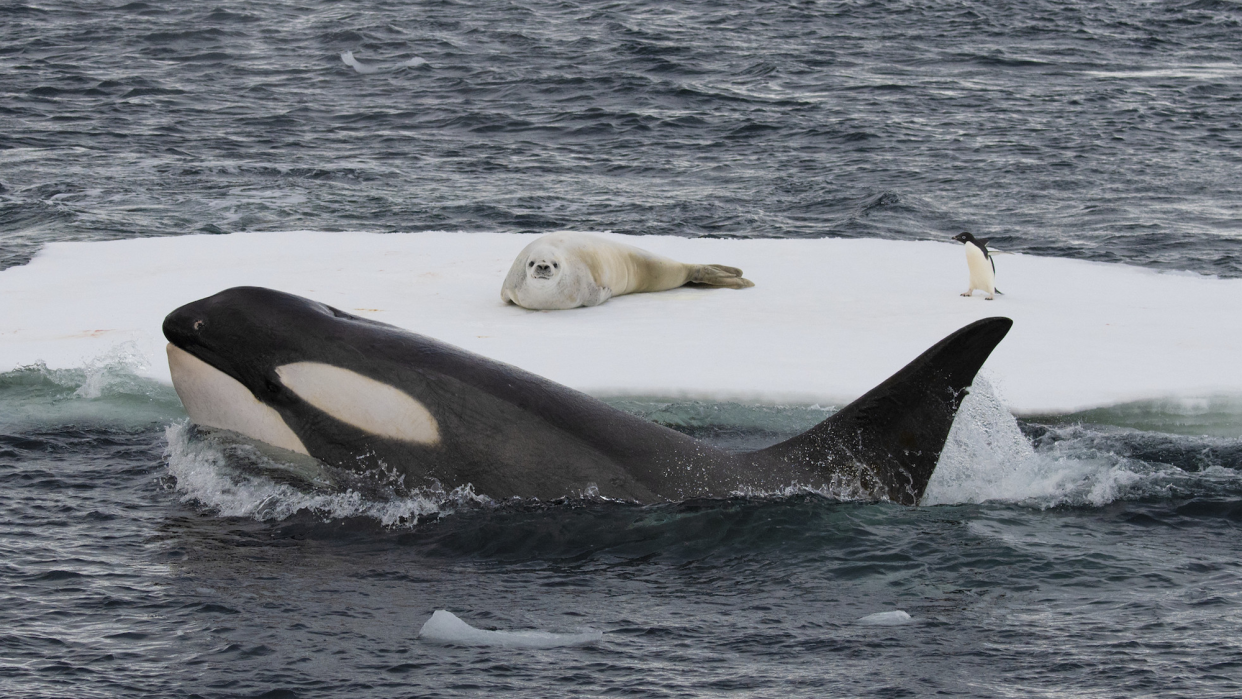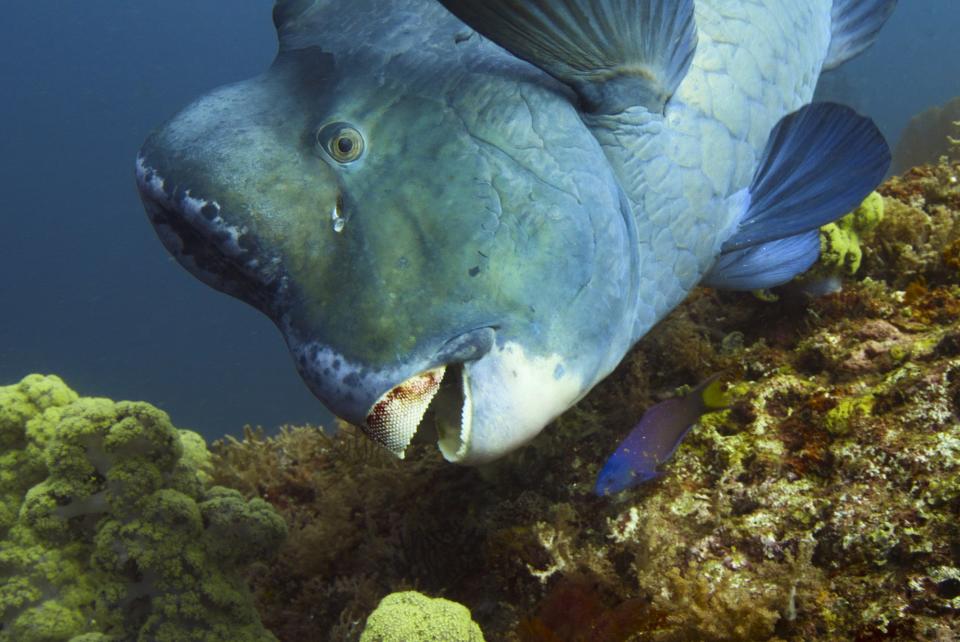New series offers an intimate look into how climate change impacts the lives of wildlife

Climate change is often in the form of extremes in weather like sweltering heat domes, devastating inland flooding or record breaking wildfire seasons, which puts lives and livelihoods at risk for humans. However, the world’s animals who are on the front lines of an ever changing planet experience these changes a little differently.
[Related: We don’t have a full picture of the planet’s shrinking biodiversity. Here’s why.]
“When we see climate change in the news, we often think of big storms or major weather events but animals are vulnerable to the smallest changes,” wildlife filmmaker and host Bertie Gregory tells PopSci.
In the new series “Animals Up Close with Bertie Gregory,” viewers can get a look into these subtleties and changes. In one episode, the team is searching a dive spot in Indonesia for the elusive devil ray, when a swarm of hundreds of jellyfish approaches.
“Avoiding their stingers was like playing a video game! We were told that huge jellyfish plumes like that were becoming a more regular sight in these tropical waters, which is not a good sign,” Gregory says.
When Gregory checked the dive thermometer, it read 87.8 degrees Fahrenheit, in water that should have been about 82 degrees. A few degrees might not always sound like much, but has an outsized impact on animals. “Jellyfish are thought to tolerate climate change better than other species, hence their huge numbers on that day. For us, it meant no other signs of life,” says Gregory.
[Related: Maine’s puffins show another year of remarkable resiliency.]
The series spans the planet and uses high-tech drones and cameras that Gregory calls a “game changer” for wildlife filmmaking. The tech allows the filmmakers to catch a glimpse of the outer lives of animals and even some of their more inner workings.
“We also used a military grade thermal imaging camera to film elephants at night in the depth of the jungle in the Central African Republic—it uses heat to “see” in the dark and elephant ears look incredible as you can see all their veins!” says Gregory.
The series also captures just how difficult it is for terrestrial animals like the pumas of Patagonia and marine mammals like Antarctica’s orca whales to get a solid meal and how climate change continues to threaten vital food sources.
An episode features a group of Antarctic orcas known as the B1s during what Gregory says was the warmest Antarctic trip he has ever experienced. These killer whales are known for a unique strategy to hunt seals resting on the ice that might remind some orca enthusiasts of the hydroplaning killer whales near Argentina’s Valdés peninsula who thrust their 8,000 to 16,000 pound bodies up onto the beach to catch seals.
https://www.youtube.com/watch?v=PIdghoUDLS8
Instead of using surf, sand, and rocks like their Argentinian cousins, these Antarctic killer whales work together as a team to create waves that wash the seals into the water.
“We witnessed and filmed the staggering intelligence and adaptability of a group of killer whales. There are thought to be just 100 of these unique killer whales in existence, and during filming it was clear they were struggling to ‘wave wash’ seals from ice because there wasn’t much ice,” says Gregory.
[Related: Orcas are attacking boats. But is it revenge or trauma?]
The whales had to constantly adapt their strategy just to get a single seal, sometimes risking an escape from their prey in order to teach the younger whales strategies to carry on to the next generation.
These constant struggles offer up sobering reminders of the macro and micro ways that the planet is changing and making life more difficult for almost every living thing.. Over one million animal and plant species are threatened with extinction, a rate of loss that is 1,000 times greater than previously expected. The United Nations agreed upon a biodiversity treaty at the end of 2022 pledging to protect 30 percent of the Earth’s wild land and oceans by 2030. Currently, only about 17 percent of terrestrial and 10 percent of marine areas are protected through legislation.

The same location in Indonesia where Gregory and his team encountered the stingy jellyfish swarm is home to the Misool Marine Reserve. Despite climate change’s constant challenges, the area is a conservation success story thanks to community-led initiatives to protect the area from overfishing by implementing specific parts where fishing is allowed.
“Now, Misool is one of the few places on earth where biodiversity is increasing. What they’ve managed to do could be a blueprint for how we can protect oceans around the world and proof that if given the chance, nature can make an amazing comeback,” says Gregory. “It’s good news for wildlife and good news for people.”
"Animals Up Close with Bertie Gregory" premieres September 13 on Disney+.

